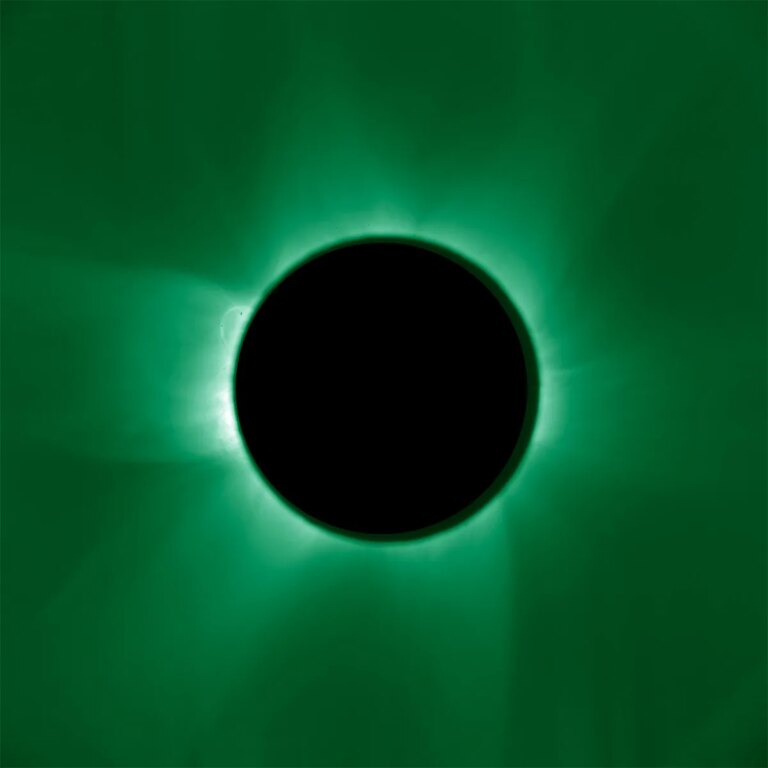How can the outermost atmosphere of the Sun be hotter than its surface?
It might seem contradictory, but it’s a well-known phenomenon known as the ‘coronal-heating problem’ that’s plagued solar scientists for decades.
A team of scientists might have just cracked it.
The Sun’s inner corona, coloured artificially to appear dark green, in an image taken on 23 May 2025 by the ASPIICS coronagraph aboard ESA’s Proba-3 spacecraft. The image shows observations in the coronal green line, which enables scientists to see the hottest contents of the corona. Credit: ESA/Proba-3/ASPIICS. Licence: CC BY-SA 3.0 IGO or ESA Standard Licence
Solution from solar science sleuths
Researchers say they’ve achieved a major breakthrough in our understanding of the Sun by solving one of its biggest mysteries.
They’ve directly observed a mysterious type of magnetic wave rippling through the Sun’s atmosphere.
If true, this could help explain one of the biggest puzzles in solar physics: why the Sun’s outer atmosphere, its corona, is millions of degrees hotter than its surface.
The discovery, published in Nature Astronomy, confirms the existence of small-scale waves known as Alfvén waves.
These twisting motions in the Sun’s magnetic field were first predicted back in 1942.
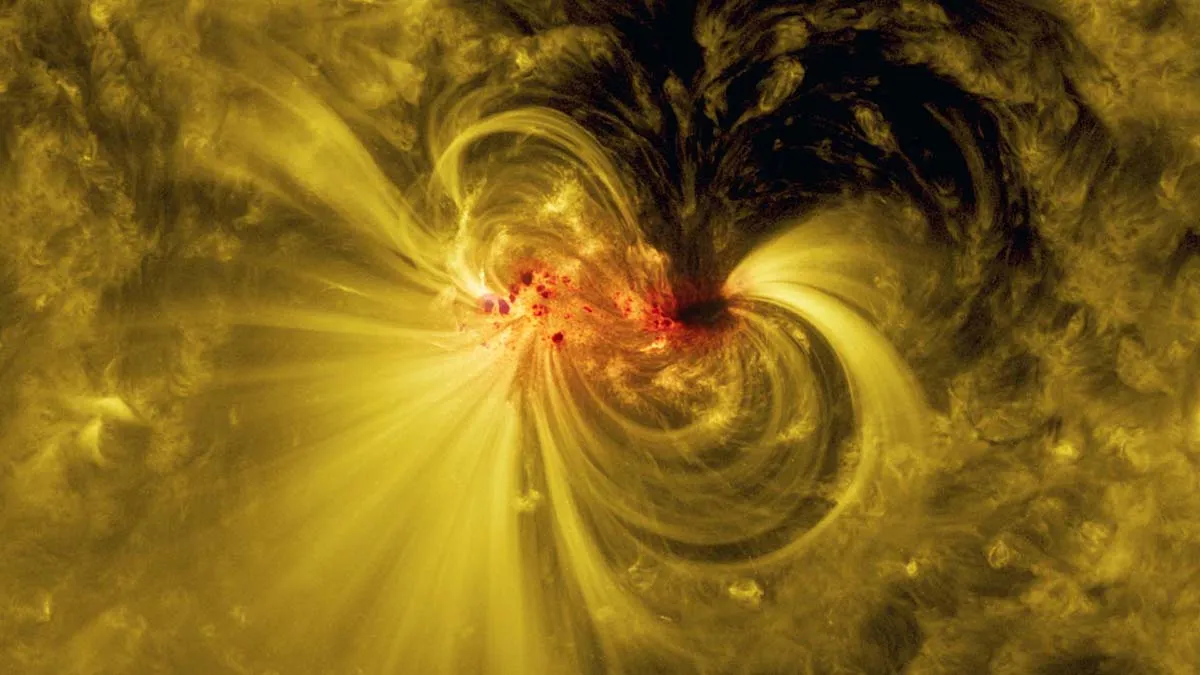 An active region on the Sun, as seen by NASA’s Solar Dynamics Observatory between 5-17 July 2017. This image shows a sunspot in visible and extreme ultraviolet light, with particles seen spiralling along magnetic field lines. Credit: NASA’s Goddard Space Flight Center/SDO
An active region on the Sun, as seen by NASA’s Solar Dynamics Observatory between 5-17 July 2017. This image shows a sunspot in visible and extreme ultraviolet light, with particles seen spiralling along magnetic field lines. Credit: NASA’s Goddard Space Flight Center/SDO
Mystery dating almost 100 years
Alfvén waves are named after Nobel Prize-winning physicist Hannes Alfvén, who predicted them in 1942.
They’re magnetic disturbances that carry energy through plasma, the hot, charged gas that makes up most of the Sun.
Scientists have detected larger versions of these waves before, usually linked to explosions on the surface of the Sun called solar flares.
But this new study marks the first direct evidence of the small, constantly occurring twisting kind that may continuously power the Sun’s outer atmosphere.
“This discovery ends a protracted search for these waves that has its origins in the 1940s,” says Professor Richard Morton, a UKRI Future Leader Fellow at Northumbria University in the UK, who led the research.
“We’ve finally been able to directly observe these torsional motions twisting the magnetic field lines back and forth in the corona.”
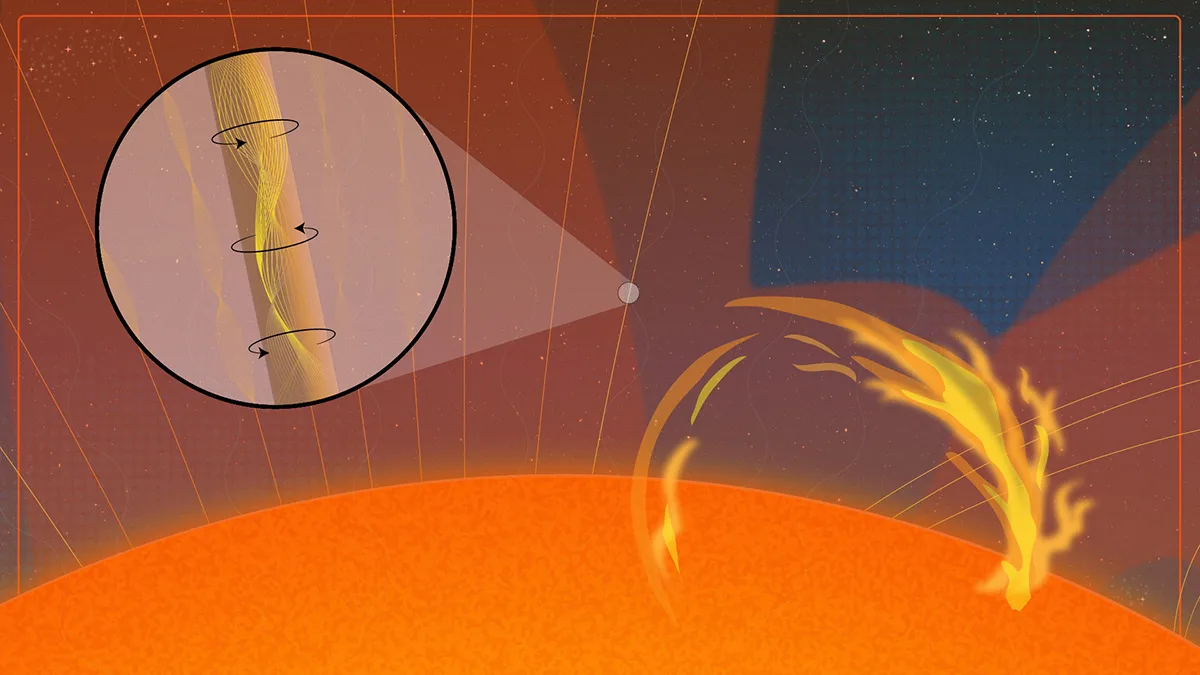 Artist’s representation of twisting magnetic waves revealed for the first time by the NSF Inouye Solar Telescope. They could be key to understanding why the Sun’s atmosphere is so hot. For more information see Morton et al. (2025). Credit: NSF/NSO/AURA/J. Williams
Artist’s representation of twisting magnetic waves revealed for the first time by the NSF Inouye Solar Telescope. They could be key to understanding why the Sun’s atmosphere is so hot. For more information see Morton et al. (2025). Credit: NSF/NSO/AURA/J. Williams
Peering into the Sun with the world’s most powerful solar telescope
The breakthrough was made possible by the U.S. National Science Foundation’s Daniel K. Inouye Solar Telescope in Hawaii.
It’s the world’s most powerful solar telescope, featuring a four-meter-wide mirror and instruments capable of detecting incredibly fine detail on the Sun.
Its Cryogenic Near Infrared Spectropolarimeter (Cryo-NIRSP) instrument allowed scientists to measure tiny shifts in the motion of plasma heated to 1.6 million°C (2.9 million °F).
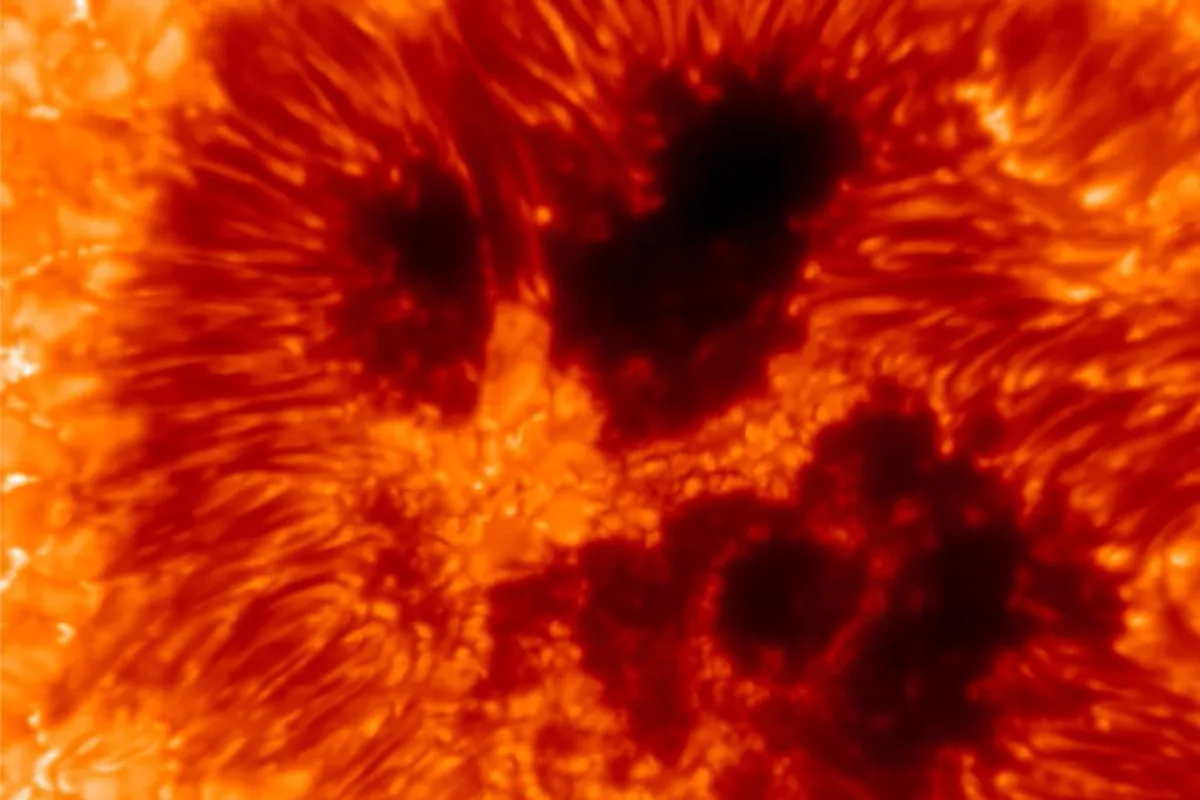 Narrowband image of sunspots on the Sun captured by the Daniel K. Inouye Solar Telescope during its Visible Tunable Filter instrument’s first light, released 24 April 2025. Credit: VTF/KIS/NSF/NSO/AURA
Narrowband image of sunspots on the Sun captured by the Daniel K. Inouye Solar Telescope during its Visible Tunable Filter instrument’s first light, released 24 April 2025. Credit: VTF/KIS/NSF/NSO/AURA
Spotting a twist hidden in the Sun’s waves
To identify the elusive torsional waves, Professor Morton developed new techniques to separate different kinds of motion seen in data collected by the telescope.
“The movement of plasma in the Sun’s corona is dominated by swaying motions,” he says.
“These mask the torsional motions, so I had to develop a way of removing the swaying to find the twisting.”
While the more familiar ‘kink’ waves make entire magnetic structures sway back and forth – visible in solar imagery – the newly detected torsional Alfvén waves create subtle twisting motions.
These can only be revealed by measuring how plasma moves toward and away from Earth, which produces red and blue Doppler shifts on opposite sides of magnetic structures.
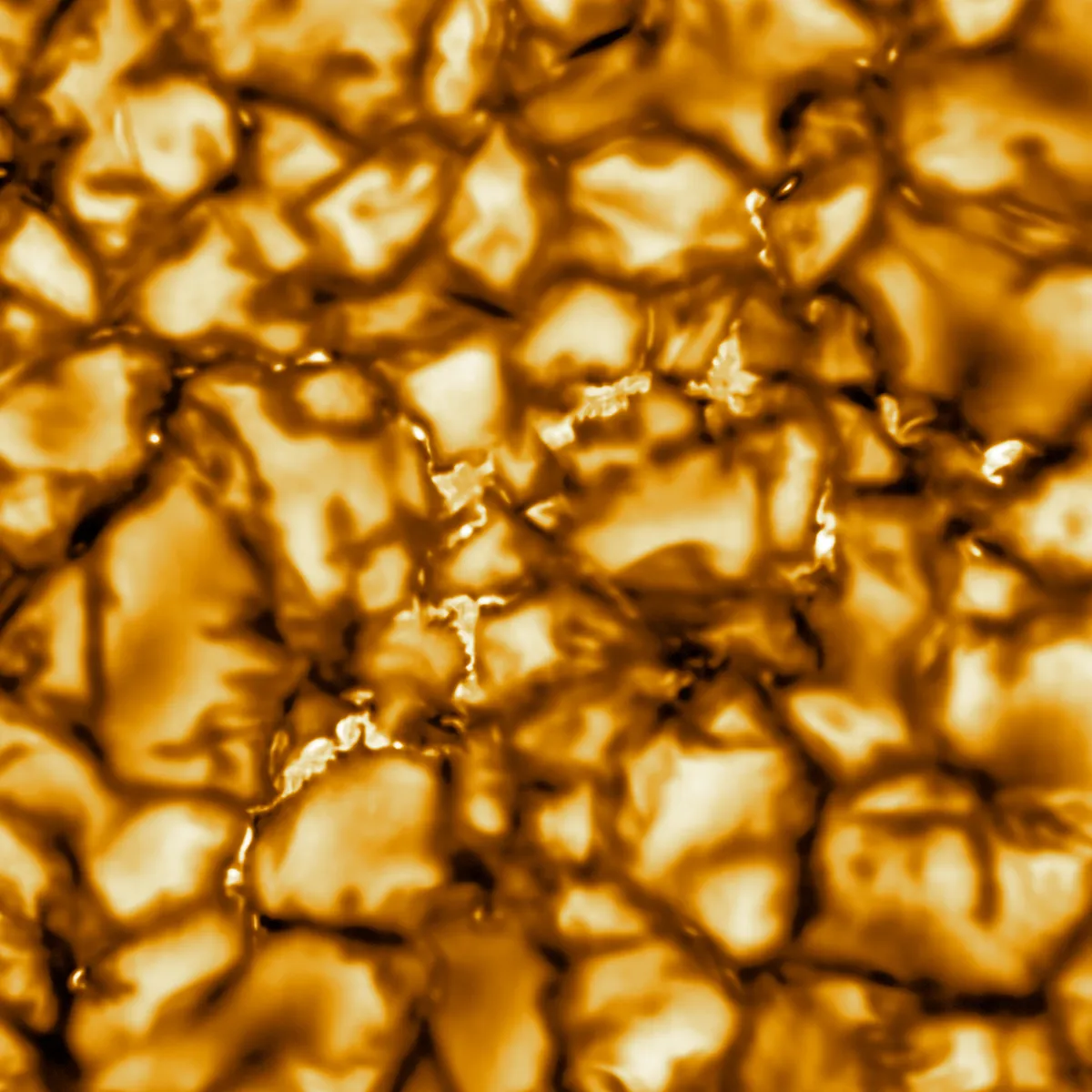 A view of the Sun’s surface captured by the Daniel K. Inouye Solar Telescope. Credit: NSO/AURA/NSF
A view of the Sun’s surface captured by the Daniel K. Inouye Solar Telescope. Credit: NSO/AURA/NSF
Unlocking the secrets of the superheated corona
The finding could finally help scientists explain why the Sun’s corona burns at over a million degrees Celsius, while the surface below remains at a comparatively cool 5,500°C.
Twisting waves may transport and release magnetic energy throughout the corona.
That could be heating plasma and helping drive the solar wind, which is a stream of charged particles that fills our Solar System and generates space weather.
Understanding how these waves work could also improve forecasts of solar activity that can interfere with GPS systems, satellites and power grids.
 Credit: Mark Garlick / Science Photo Library / Getty Images
Credit: Mark Garlick / Science Photo Library / Getty Images
Global effort with cosmic implications
The research was an international collaboration involving scientists from Northumbria University, Peking University, KU Leuven, Queen Mary University of London, the Chinese Academy of Sciences, and the NSF National Solar Observatory.
“This research provides essential validation for the range of theoretical models that describe how Alfvén wave turbulence powers the solar atmosphere,” says Professor Morton.
“Having direct observations finally allows us to test these models against reality.”
Read the full paper via Nature Astronomy
Images are for reference only.Images and contents gathered automatic from google or 3rd party sources.All rights on the images and contents are with their legal original owners.
